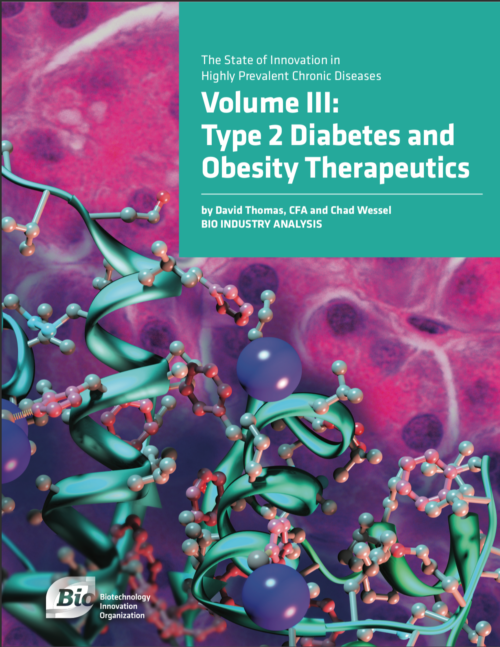
BIO recently published their latest report characterizing innovation in highly prevalent, chronic diseases. A full list of past reports is available here. They are short, data-rich, and quite informative.
The overall perspective in these reports is that a number of highly prevalent, chronic diseases suffer from a lack of investment and innovation. Depression, Pain, and Addiction are subjects covered in earlier editions.
The latest report covers Type II Diabetes and Obesity.
Wow…where does one begin…
Regular readers of this blog will be aware of the rapidly growing global prevalence of Type II Diabetes and Obesity. Yet, as the report concludes, innovation is sorely lacking.
In Type II Diabetes, there have been precious few approved compounds with novel mechanisms of action, with the SGLT2 Inhibitors being the only ones over the past 10 years. Various combination products have also been approved.
Ironically, insulin has seen a great deal of innovation in terms of novel formulations, delivery systems and derivatives.
On the surface, the clinical pipeline appears robust. There are over 80 candidates in Phase I or later, of which 36 of them are novel mechanisms of action. However, none of these novel compounds are beyond Phase II. And, as the report notes, the clinical success rate in diabetes is lower than other areas. To place this in perspective, the ~80 candidates for diabetes are about half of what are in breast cancer alone.
Venture investment does not look promising either. Three quarters of this investment is targeting repurposed or reformulated candidates. This is not necessarily a bad thing. Improved compliance, for example, can result in good clinical benefits. But it remains a bit disappointing to see so little investment in novel mechanisms.
The obesity story is not much better. Only 12 new chemical entities are on the market for obesity, with one (liraglutide) being approved since 2014. There are 14 new chemical entities with new mechanisms in development, with only 2 of them in Phase II, and none in Phase III or beyond.
So what’s going on here?
The reasons for this lack of innovation are complex. From an industry perspective, these are very difficult markets from both a development and commercialization perspective, as demonstrating efficacy against standard of care requires very large clinical trials. Further, many of these mechanisms having low-cost generics readily available.
These markets are further complicated by the fact that they are competing against diet and exercise.
Now clearly, diet and exercise are not working to stem the rise in diabetes and obesity. However, as more physicians recognize that prescription drugs are not the solution, there may be a shift in how physicians view these two conditions…less from a pharmacological perspective and more from a nutritional and activity perspective.
Indeed, even drug classes which were considered safe and borderline innocuous are being re-examined. For example, there is evidence suggesting that statins may raise fasting insulin and decrease insulin sensitivity while simultaneously decreasing LDL cholesterol.
If you are a physician, is this something you really want to do with your patients?
If physicians want to continue their role as partners in our overall health and well being, this movement to reduce prescription drug use in exchange for a holistic, total health-centric approach, is both logical and welcome.
But we are fighting an uphill battle, as there is seemingly no end to the barrage of marketing messages from companies selling processed foods, “weird tricks” that cause weight loss, and drugs which reduce “bad” cholesterol.
Thus, as long as we abrogate responsibility for our own health through self control and self discipline, we will likely see these trends continue for the foreseeable future.
Speaking of physicians…it was interesting to monitor the Annual American Heart Association conference via Twitter (#AHA18). You can still scroll through the many tweets that include pictures from the conference, including slides, posters, links to publications, etc.
Now we concede the point that this is a cardiologist-centric conference, and hence drug therapy research is a major part of this event. Clinical studies which demonstrate new ways to use old drugs are an invaluable contribution to how they treat a a variety of cardiovascular diseases. We were encouraged by several studies, like this one, which demonstrated the potential harm associated with energy drinks.
However, we are slightly disappointed at the paucity of research on the impact of diet and exercise on cardiovascular disease. Is this because the diet and exercise concept is so well known that it doesn’t warrant fresh research? Are physicians simply too ingrained to follow something other than the lab value – prescribe Rx – check lab value again habit?
Ultimately, if Western society truly wants to tackle preventable diseases like Type II diabetes and obesity, then we obviously need to put the fork down and eat fewer processed foods. That responsibility falls on our chubby shoulders.
But, we also need the medical community (doctors, nurses, pharmacists, insurors) to constantly remind and encourage us to exercise and eat properly.

And it has to be more than a doctor saying “Go get some exercise” every 6 or 12 months. We need, for example:
- More physicians incorporating CrossFit and similar exercise methods directly into their own practices;
- Supermarket-based pharmacists providing specific food purchasing and meal planning guides to shoppers;
- More insurance companies rewarding policyholders for fitness via lower premiums, while providing coverage / reimbursement for gym memberships.
More innovation in Type II Diabetes and Obesity would obviously be welcomed. There will always be a subset or segments (albeit, very small) of these populations which do not respond well to diet and exercise. However, these markets will likely continue to grow from a prevalence perspective, yet remain economically unattractive for pharmaceutical companies and their investors.

